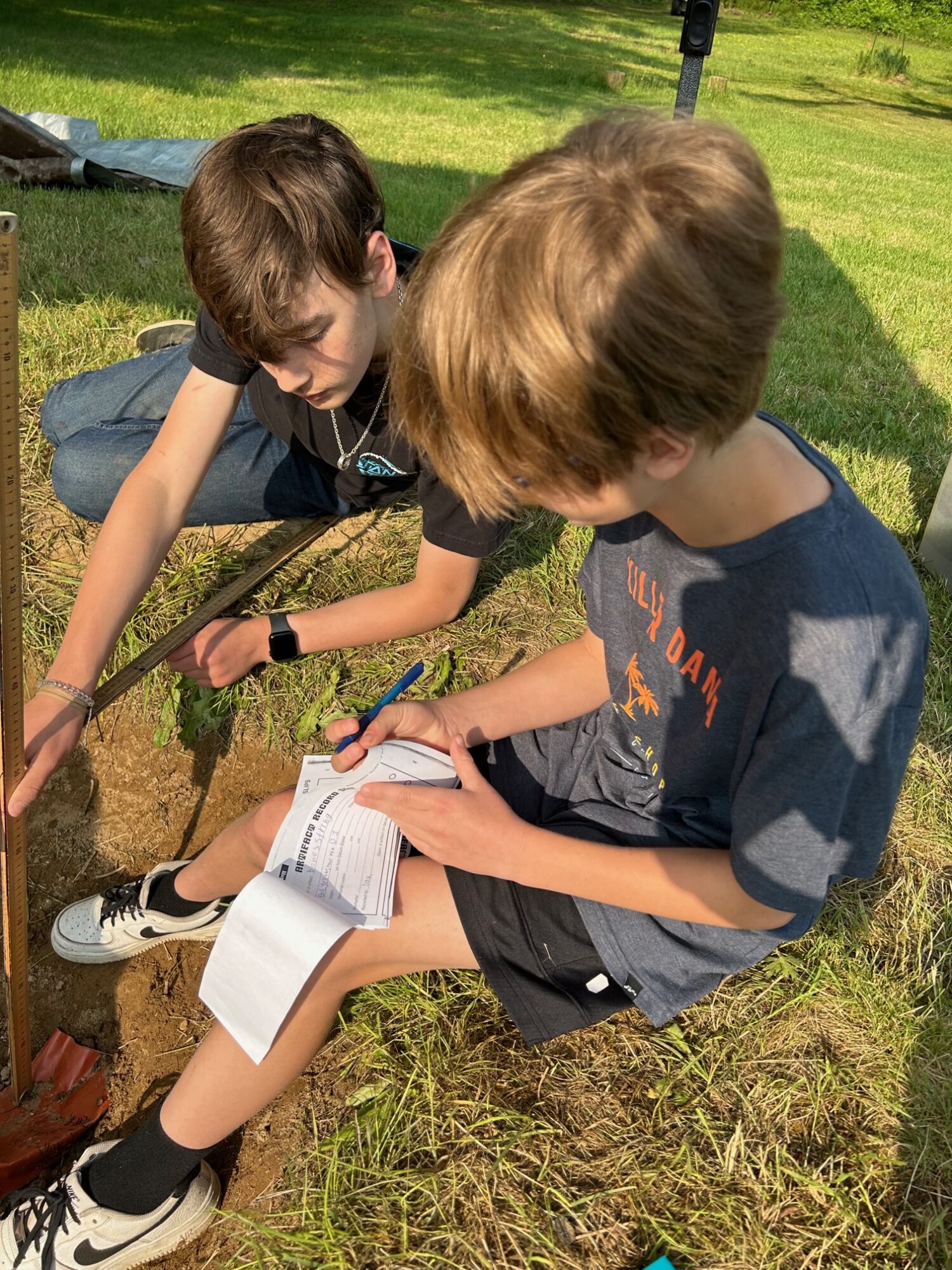Hyla Stories
6th Grade: Creating Civilizations, Building Academic Foundations.

In the Classroom & In the Dirt: Hands-On Learning.
Over the past few weeks, a familiar scene has unfolded in the back field: shovels, charts, brushes, and sieves – and lots and lots of dirt. Throughout the archaeology dig, students take on specific roles that replicate the different jobs of a true archaeological dig. Working as a team to excavate buried artifacts, they fill out an “Artifact Record Slip” where they note key data like the site, depth, and distance from the datum stake. They request help from “the lab,” which provides carbon dating and a material analysis. Working together, they discover clues that help them decode symbols on the artifacts they dig up. They receive “up-to-the-minute breakthroughs” from classmates that inform individual analysis as well as group interpretations. Each student has a role in the common methodology as they work toward one goal: to discover as much as they can about the civilization that created these mysterious artifacts.



Yet before they are the archaeologists, students are anthropologists and artists. Working in two separate groups, students begin with only a geomorphic location in history to invent an entire civilization together, creating the different “culture universals,” like religion, food, and language. Next each group takes their newly invented culture to the art room where they create artifacts that represent the different culture universals, carefully choosing materials relevant to the climate and landscape for their civilization. Each artist writes a statement to explain what their artifact represents and how it is used.
All of this work is top secret to support what happens next. Each group buries their artifacts in the back field and then they swap archaeology pits. In two separate digs, students unearth what their classmates buried and try to decipher what each item means. This unit requires a deeper level of collaboration that Jennifer knows will build essential executive functioning skills and academic habits that will serve students well beyond 6th grade. “At this age,” says Jennifer, “they are just learning to consider input from others and integrate that new knowledge into their own understanding and analysis.” She goes on to explain that the archaeology unit “requires individual critical thinking as well as abstract thinking while it also stretches them by requiring that they work toward a shared goal. The way this unit is designed, they have to work together. There’s no way they can’t!” While artifact damage is common during the excavation process, Jennifer was very proud of this group for their careful use of tools and proudly shared that not one object was damaged, while also praising students for how supportive and helpful they were with each other.
Throughout this unit, students learn to use a common framework and method as they work together, another essential academic framework they will use across disciplines throughout their schooling. “As archaeologists, they have to keep meticulous records,” explains Jennifer. “They use reconstruction forms, artifact slips, tagging numbers and other systems to carefully organize all the clues they rely on to interpret the artifacts. This builds the academic habit of using evidence to support your claims.”
Their diligent work paid off and today, students made important breakthroughs based on a simple recorded measurement. “Using data and contextual evidence,” Jennifer explained, “they realized their artifact connected to another artifact. Once they made that connection, they merged their thinking to reach a new discovery about the culture.” Today, students also made important strides in decoding language: Challenging their own assumptions allowed students to consider that not all languages are read in the same direction. This nuanced shift allowed them to decode the language and share their findings with classmates, who then applied the new knowledge to their own analysis and interpretations.
At Museum Night, parents will get to tour an exhibition of artifacts and gain insight into both the creation phase and the interpretation phase of this unit. Each artifact will be displayed alongside two pieces of student writing. On one side, you’ll see the artist’s statement explaining the intention behind the piece, how it was used, and what it means to the invented civilization. On the other side, parents can read the perspective of the archaeologist explaining what they believe is the function of the artifact based on the evidence they gathered and decoded. We look forward to sharing their creativity, teamwork, writing, and critical thinking next week!
